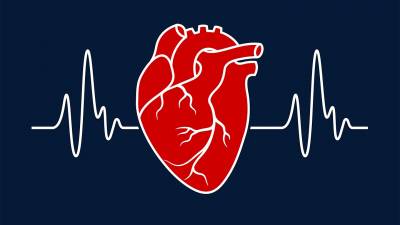If a patient has heart failure and has developed arrhythmia, he or she may be a candidate for Cardiac Resynchronization Therapy (CRT). Arrhythmias are irregular heart rhythms and can be caused by a variety of reasons, including age, heart damage, medications and genetics.
Cardiac Resynchronization Therapy is a treatment for heart failure in people whose ventricles don't contract at the same time. It is a procedure to implant a device in a patient’s chest to make his or her heart's chambers contract in a more organized and efficient way.
A patient with heart failure, has a weakened heart muscle and may not be able to pump out enough blood to support the body. This can be worsened if the heart's chambers aren't in sync with each other.
Types of Cardiac Resynchronization Therapy devices include:
· Cardiac Resynchronization Therapy with a Pacemaker (CRT-P). The device used for cardiac resynchronization therapy has three leads that connect the pacemaker to the right upper chamber of the heart (right atria) and both lower chambers (ventricles).
· Cardiac Resynchronization Therapy with a Pacemaker and an Implantable Cardioverter-Defibrillator(ICD) (CRT-D). People with heart failure who also have a risk of sudden cardiac death may benefit from an ICD that can detect dangerous heart rhythms and deliver a stronger correcting shock of energy than a pacemaker can deliver. In these cases, a cardiac resynchronization therapy device that works as both a pacemaker and an implantable cardioverter-defibrillato may be recommended.
Cardiac Resynchronization Therapy requires a minor surgical procedure to implant a device in the chest.
The patient may likely be awake during the procedure, though the area where the pacemaker is implanted is numbed and will receive medication to help him or her relax (conscious sedation). The procedure typically takes a few hours.
During surgery, insulated wires (leads, or electrodes) are inserted into a major vein under or near the collarbone and guided to the heart with the help of X-ray images. One end of each wire is secured to the appropriate position in the heart, while the other end is attached to a pulse generator, which is usually implanted under the skin beneath the collarbone.
In general, CRT is for heart failure patients with moderate to severe symptoms and whose left and right heart chambers do not beat in unison. However, CRT is not effective for everyone and is not for those with mild heart failure symptoms, diastolic heart failure or who do not have issues with the chambers not beating together. It is also not suitable for patients who have not fully explored correcting the condition through medication therapies.
At First Cardiology Consultants, we have continually been at the forefront in minimally invasive treatment options for cardiovascular care. Our staff are skilled in several procedures, including routine heart catheterization.
REFERENCES
https://www.mayoclinic.org/tests-procedures/cardiac-resynchronization-therapy/pyc-20385014
https://www.thecardiologyadvisor.com/cardiology/cardiac-resynchronization-therapy/article/583215/

